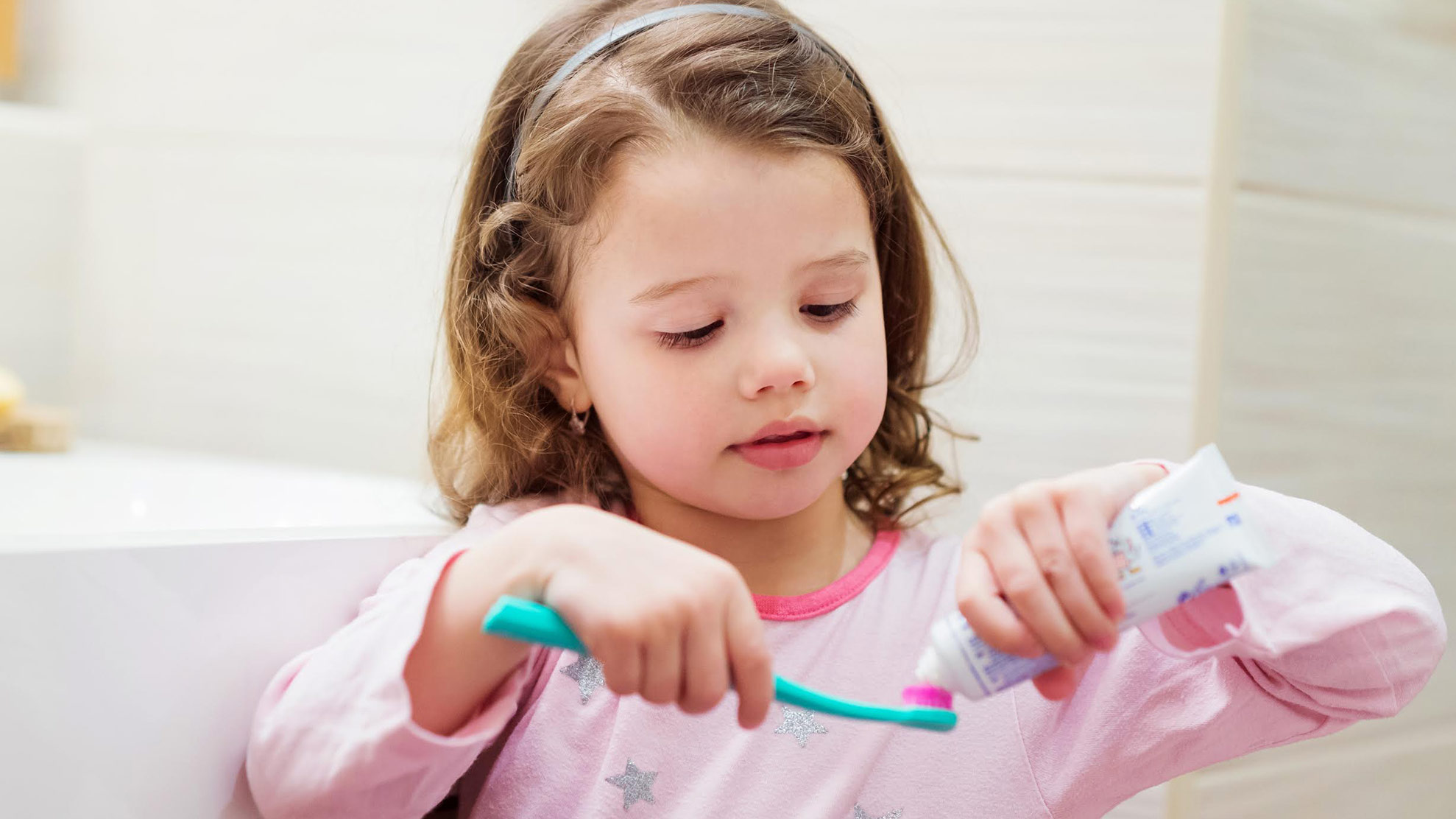Somewhere after their second birthday, it is time to teach your kids how to brush their teeth. Tooth-brushing is a simple but important habit to develop. You know where we are going with this, right? Thinking before buying is another simple but important habit to develop.
We thought of the parallels between good oral hygiene and respect for money when a reader recently confessed that he had initially thought of the DIMS SCORE® CALCULATOR as “instructions for toothpaste.” He just wasn’t sure he needed our tool to give his kids money-smarts. However, as you’ll read below, Greg discovered over the holidays that the DIMS SCORE® CALCULATOR is incredibly effective at preventing the “financial cavities” no one wants a family member to develop.
Why is teeth-brushing widely accepted as a must-have in our children’s lives but not age-appropriate money skills?
How long did your children observe teeth brushing before they joined the ranks of daily brushers? Despite all of those observations, did they automatically know how much toothpaste they should use or to never swallow the foam brushing produces? Ask your kids where money comes from. We’ve heard some fascinating answers in our travels, such as a) A window across the street from Tim Horton’s, b) The magic card in Dad’s wallet, and c) Aunt Kira’s phone.
Observation teaches, but not completely.
Our children learn a lot through observation, but not everything we want them to know. In the case of money, given all the different payment schemes that exist today, we need to be clear about the fact that we work to earn wages that we can withdraw from “bank windows; that only when we get paid do we have money to spend, and that our “credit or debit cards” are just tools we can use to buy things.
We need to explain that because our wages aren’t unlimited, we want to spend them with purpose and intent. The DIMS SCORE® Calculator gives families natural opportunities to have those important conversations—at least twice a year—when kids answer the question “What would you like for your birthday?” or “What would you like for a holiday gift?” It gives those important conversations structure, purpose, and a timeline. The lessons it delivers are quick but meaningful.
“ Before they use it… people may see the DIMS SCORE® Calculator as synonymous with a set of instructions that come along with toothpaste, and think to themselves, Do I really need this? But it is so easy to use…and really helps kids understand the full value of a request…”
Mr. Greg Gamsson, Toronto
Not only Dentists teach their kids to brush their teeth!
We know we don’t have to be “experts” to teach our kids good oral hygiene. Parents from every walk of life teach their kids how to brush their teeth—not only Dentists! Experience has taught us that if our children consistently practice this simple habit, they can enjoy a cavity-free smile for life. Similarly, a simple tool that helps them practice thinking before buying can help them develop lasting money-smarts. But the timing is key. Our money personalities (the habits and beliefs we have about money that inform how we think and act with it for the rest of our lives) are incredibly stable and largely established by adolescence.

We don’t start any other subject in the middle.
We don’t start any other subject “in the middle.” We learn the alphabet and then how to read, about numbers, and then how to do math. What comes before learning how to balance a household budget or understand payroll deductions on your first summer job pay stub for the students lucky enough to receive early financial education? Sometimes, very little. Think of thinking before buying as the ABCs or 123s of being good with money. Mastering the basics of any subject is what gives kids the confidence and appetite to want to know more. Personal finance lessons aren’t any different.
Where the analogy ends…
Where the analogy ends is that once we teach our kids how to look after their teeth, that job is pretty much done, but money lessons look different for every age and stage. Allowance best practices are quite different for kids 12 and under, versus those for Teens. Younger children tend to ask for a greater number of less expensive items than older kids. Younger children are also more focused on items versus experiences.
This is why we have two main categories of DIMS SCORE® (Items/Experiences) and six platforms within our “Items” silo (Toys, Clothes, Sports Equipment, Electronics, Formal Wear, and Other) so that we can help 9 to 18-year-olds quickly research if a request makes sense before they make it. (Of course, the number of uses required to justify purchasing a prom dress is much lower than that of new hockey skates!)
Skeptical?
If you don’t believe thinking before buying can help school-aged children develop lasting money smarts, take a look at the history of oral hygiene. The adoption of regular tooth brushing saw cavities move from an early-onset childhood disease to a late-onset adult disease. Dentures used to be something most senior citizens had. Hardly any of today’s adults will need them.
It’s true that few of us need toothpaste instructions, but that’s because someone took the time to teach us how to use it when we were very young.
Click on the blue or green buttons below to learn more about our approach to early financial education.
Child Development For Parents For Teachers



